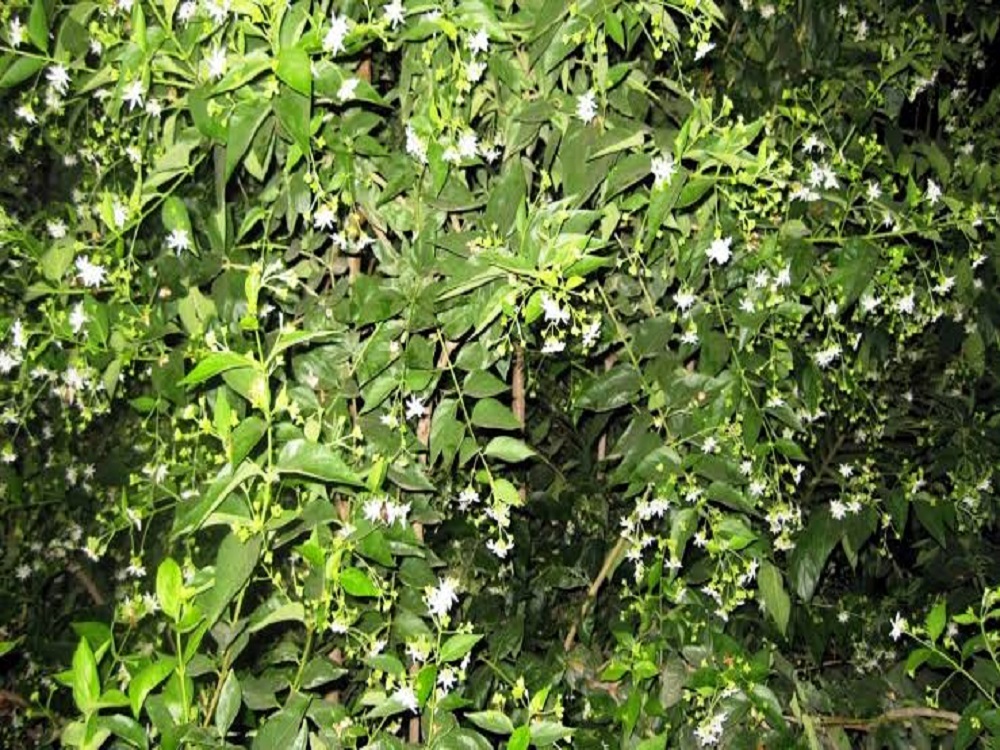Paarijat - Night Jasmine Tree

Nyctanthes arbor-tristis
Summary
Scientific Classification
Kingdom: Plantae
Division: Angiospermae
Class: Dicotyledonae
Order: Tamiales
Family: Oleaceae
Genus: Nyctanthes
Species: N.arbor-tristis
Scientific Name: Nyctanthes arbor-tristis L.
Common Names:
English: Coral Jasmine, Night Jasmine.
Hindi: Paarijat,Har Singar, Shefali.
Kannada: Goli, Harsing, Parijata.
Marathi: Kharbadi, Kharassi, Khurasli, Parijatak.
Description:
- Habit & Habitat: Coral jasmine is a large shrub or small tree with spreading branches, growing up to 10 metres tall.Rocky ground in dry hillsides, and as undergrowth in dry deciduous forest.
- Distribution: it is native to southern Asia, stretching across northern Pakistan and Nepal through Northern India to Southeast Thailand. It grows at sea level up to 1500 m altitude, within a wide range of rainfall patterns, from seasonal to non-seasonal and is tolerant to moderate shade.
- Morphology:
Leaf: The simple leaves are opposite, with an entire margin about 6 to 12 cm long and 2 to 6.5 cm wide.
Inflorescence: Axillary and in short terminal cymes.
Flower: Flowers white, sweet scented, sessile, 3-7 together on hairy quadrangular peduncles arranged in cymose panicles.Calyx tube funnel shaped, 4-5 toothed; corolla tube cylindrical, orange red, lobeswhite, 5-8, contorted in bud.
Flowering season: September – October.
Androecium: Anthers subsesile near the mouth of the corolla tube.
Gynoecium: Ovary two celled style cylindric, bifid.
Fruit: The fruit is flat, brown and heart-shaped to rounded-capsule, around 2 cm in diameter with two sections, each containing a single seed.
Seed: The seed is compressed and is 1 per cell. Seeds are exalbuminous, testa thick, the outer layer of large transparent cells and heavily vascularised.
Fruiting season: cold season. - Propagation: Coral jasmine is easily propagated by seeds or cuttings.
- Importance:
The leaves are used in fevers and rheumatism. The leaves have been proved effective in malaria. The dry leaves are used as fine sand-paper. A saffron-yellow dye obtained from the flowers is used for colouring food. They are used medicinally to provoke menstruation. - Location: Botanical Garden.
 Trees of GSS Project supported by Makerspace Belgaum Website concept and designe by
Trees of GSS Project supported by Makerspace Belgaum Website concept and designe by